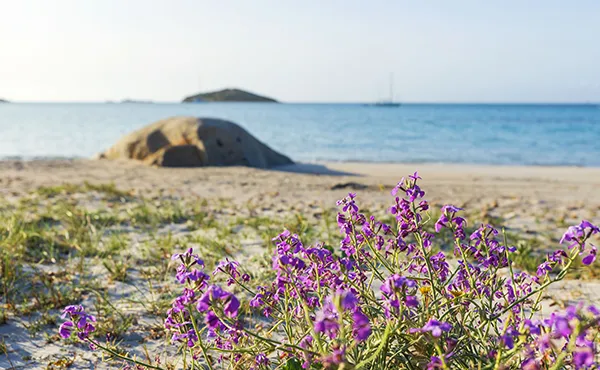Magazine IDEAT - Breathtaking Corsica
In southern Corsica, Porto-Vecchio has stood for nearly four millennia at the bottom of a rocky gulf sheltered from the Tyrrhenian Sea. From there, beach lovers—which the port city lacks, strictly speaking—have several options, including the beach at Saint-Cyprien. Beginning in the 1970s, this hamlet sprang up as residential developments along a magnificent sandy bay. Surprisingly, no hotel had ever been planned in the center of what is now a veritable village with shops and restaurants.The Son de Mar therefore fills a gap for those wishing to free themselves from the daily chores of renting a property. On a plot of land located a stone's throw from the beach, the Coll family—previously engaged in construction—built a two-story building that fits seamlessly into the town's stylistic landscape. While the architecture aligns with the surrounding volume, it stands out with its minimal treatment of interior spaces and its contemporary design. The lobby sets the tone with this furniture "installation" composed of an Osaka sofa and Mushroom poufs by Pierre Paulin. On the upper floors, the walls and ceilings of the 30 rooms, half of which have a large terrace, were left in raw concrete. To counterbalance this mineral presence, the modular fittings (wardrobes, bathrooms, etc.) were made of natural wood, relying in particular on combinations of arches, while the furniture was sourced from the Audo brand catalog. This touch of Nordic design thus brings contrast to these spaces with a radical and, to say the least, unique bias in the perimeter. We will also find some references from the Danish brand as well as the Sancal brand in the layout of the restaurant. Much like a boutique hotel, it opens completely onto the street, passing through a shaded terrace where guests can enjoy a wine bar. On the lower level of the building, wellness enthusiasts have access to a Codage spa with a generous plunge pool reminiscent of a Mediterranean thermal bath. Finally, as a final detail, the hotel features an olfactory signature—based on pine sap—that Berlin-based studio AOIRO created "like a sensory imprint in the guests' memories." O.R.


